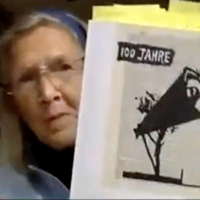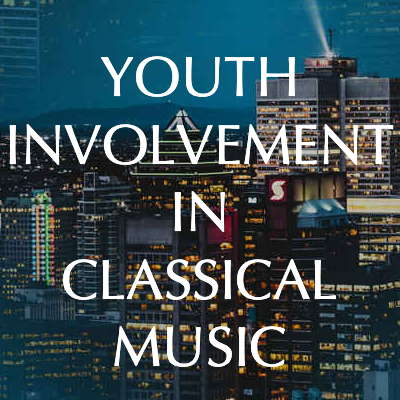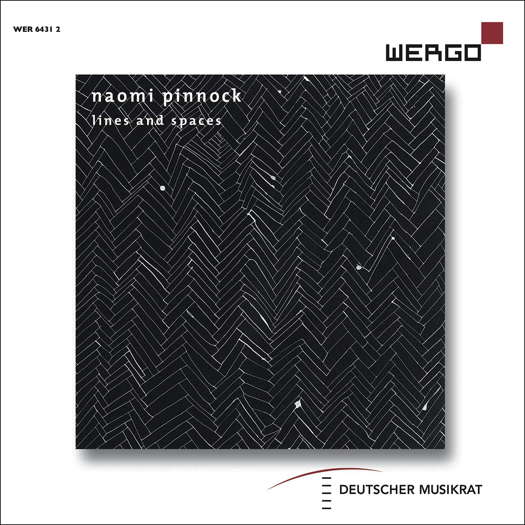- Stravinsky: The Firebird
- Karen Tarlow
- Allegri Quartet
- Abbado
- Reginald Twiddlebrain
- Centaur Records Inc
- Pergolesi
- Jonathan Small
 VIDEO PODCAST: Discussion about Bernard Haitink (1929-2021), Salzburg, Roger Doyle's Finnegans Wake Project, the English Symphony Orchestra, the Chopin Competition Warsaw, Los Angeles Opera and other subjects.
VIDEO PODCAST: Discussion about Bernard Haitink (1929-2021), Salzburg, Roger Doyle's Finnegans Wake Project, the English Symphony Orchestra, the Chopin Competition Warsaw, Los Angeles Opera and other subjects.
 VIDEO PODCAST: John Dante Prevedini leads a discussion about Youth Involvement in Classical Music - this specially extended illustrated feature includes contributions from Christopher Morley, Gerald Fenech, Halida Dinova, Patricia Spencer and Roderic Dunnett.
VIDEO PODCAST: John Dante Prevedini leads a discussion about Youth Involvement in Classical Music - this specially extended illustrated feature includes contributions from Christopher Morley, Gerald Fenech, Halida Dinova, Patricia Spencer and Roderic Dunnett.

Somewhat Disturbing
Thought-provoking music by Naomi Pinnock, heard by GEOFF PEARCE
'The performances and attention to detail were impressive, which added to my enjoyment and comprehension of the music.'
Naomi Pinnock (Born 1979) is not a household name to most of us, however she is highly regarded in the field of contemporary music. Her music is challenging to perform, and challenging to listen to, but is certainly interesting and thought provoking.
The disc starts with the second of her three string quartets. This work was written in 2011-2012. The composer uses her musical material very economically. It would be appropriate to quote the composer here: 'This treatment of musical material is similar to my manipulation of text in recept works. It has a lot to do with memories – how sometimes a vividly experienced dream can suddenly vanish upon waking and all you can grasp hold of are fragments. And how those fragments often linger but finally fade away.' Interestingly I had this thought in my mind as I listened to this work. It is of about twelve minutes duration and is in two quite different movements, but repetition plays an important part in both. The opening movement is expansive, but starts with a 49 bar passage for viola alone, whereas the second movement, although still containing as lot of repeated patterns, is somewhat sparser and nebulous. I find this very effective work somewhat disturbing, not in a nightmarish way, but in the uneasiness it establishes in my mind, no matter how many times I listen to it.
Listen — Naomi Pinnock: II (String Quartet No 2)
(track 2, 2:00-2:43) © 2020 Wergo :
Words was written in 2010-2011 and was structured around text written by the composer. I refer the listener to the booklet that accompanies this disc. I found this to be a most fascinating work, scored for baritone and ensemble. It is one of those works that, for me at least, needs to be listened to with total attention. A good pair of high-quality isolating headphones is ideal. The work is in three movements.
Listen — Naomi Pinnock: Why ... (Words)
(track 3, 3:18-4:05) © 2020 Wergo :
Lines and Spaces for solo piano (2015) was inspired by some minimalist square paintings of Agnes Martin that were composed of grids and lines. 'They are just grids and lines, and yet they evoke more, with the delicate layering of paint and beautiful imperfections. These miniatures fluctuate between compressing or expanding, creating a bold line or subtle bands of faint colours.' This description sums up beautifully this work that constantly alternates spaces and lines, realised by the vertical and the horizontal.
Listen — Naomi Pinnock: Space I (Lines and Spaces)
(track 6, 0:14-0:45) © 2020 Wergo :
Listen — Naomi Pinnock: Line I (Lines and Spaces)
(track 7, 0:01-0:13) © 2020 Wergo :
The final work on this disc, Music for Europe (2016) was inspired by a painting of Paul Klee, painted one hundred years earlier. The composer states: 'I saw this painting just days after the UK voted to leave the European Union. I was touched by its simple, fragile vulnerability made at a deeply fractured time.' The eighteen-minute work is divided into five movements. The piece is at times, sorrowful, and fragile, is scored for five instruments and the composer pushed herself hard to work with the bare minimal of material. Each movement has its own descriptive title, and to me the work speaks most strongly, and to some extent expresses the isolation and hopelessness that I feel when contemplating the current state of the world.
Listen — Naomi Pinnock: Transparent lament (Music for Europe)
(track 12, 3:28-4:15) © 2020 Wergo :
Listen — Naomi Pinnock: Rising, rising (Music for Europe)
(track 16, 1:46-2:38) © 2020 Wergo :
This a very interesting disc and you will likely have strong feelings about it one way or the other. I am not really a fan of minimalist composers, particularly those that rely on arpeggiated or rhythmic repetitions, but there is something satisfying about this collection of works. I found more, and it affected me in different ways with each hearing. The performances and attention to detail were impressive, which added to my enjoyment and comprehension of the music.
Copyright © 13 September 2020
Geoff Pearce,
Sydney, Australia

CD INFORMATION - NAOMI PINNOCK: LINES AND SPACES
FURTHER ARTICLES ABOUT CONTEMPORARY MUSIC


